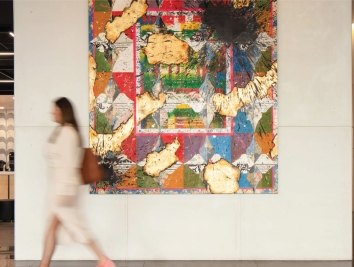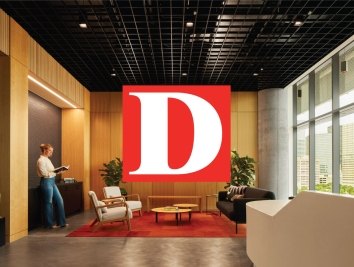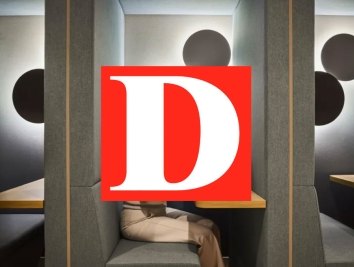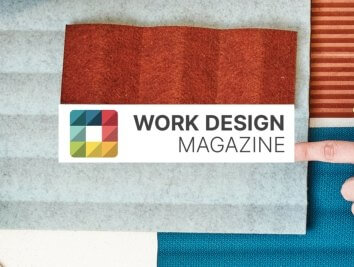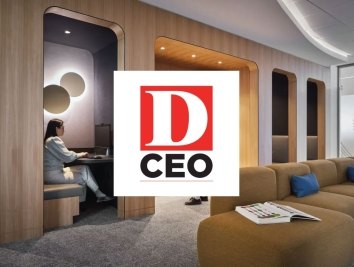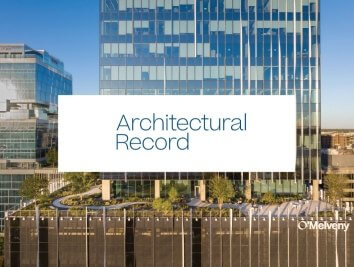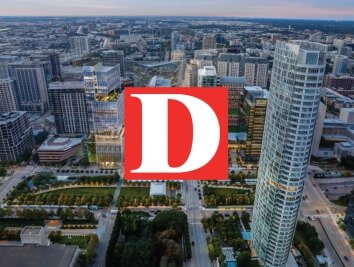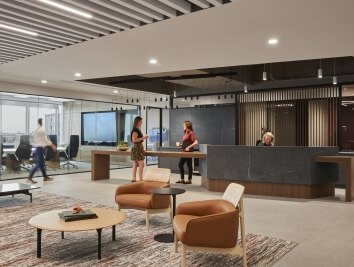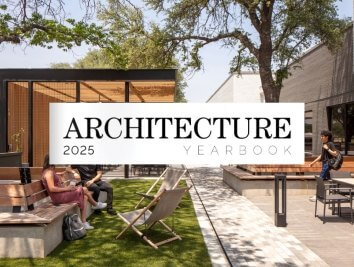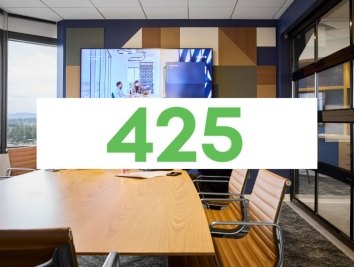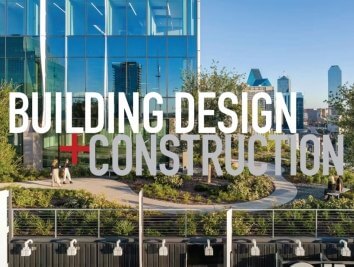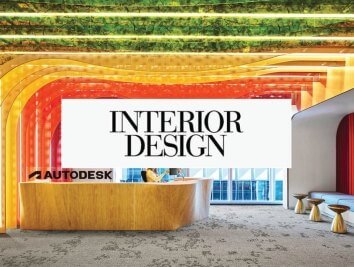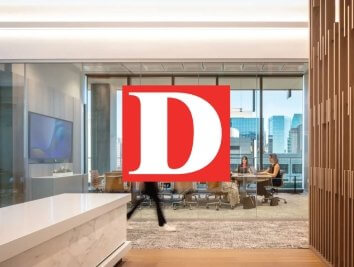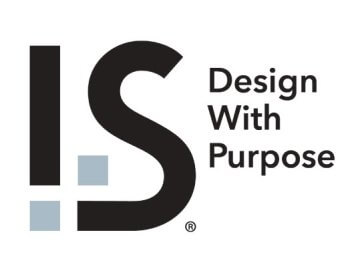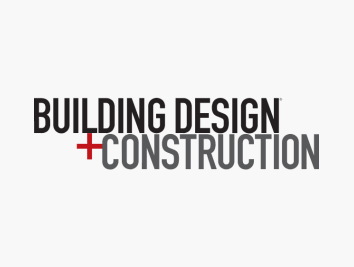Graveyard of Desks: Preserving Office Culture in a Hybrid World
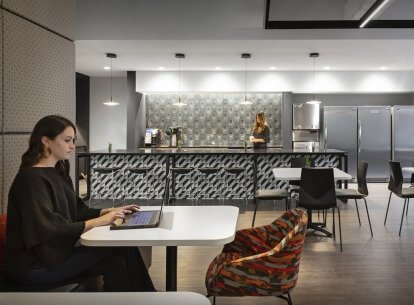
Somehow, technology has made us feel more connected and disconnected to each other all at the same time.
Miss people? That’s because it can’t quite replicate the experience of in-person interaction. While emerging tech has revealed new possibilities, it feels like something is missing: people.
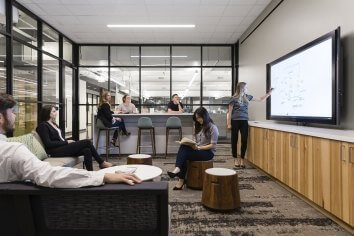
At its most basic function, an office is a worksurface, ergonomic chair, two monitors, and reliable internet. It may not sound like much but can be pretty appealing when you’re battling over bandwidth and kitchen island territory with your roommate. And you can’t forget the software—collaboration tools like Mural, Teams, and Slack have made possible a flexibility that most of us appreciate and need. It’s also made some parts of individual and teamwork more effective, easier to track, and convenient. It’s not about the basics, though, because the desk and the tech don't define an office. They never did.
The office holds a whole other symbolic value. An exciting brainstorming session. The after-meeting meeting. The creative ideas, inside jokes, tips on where to find the best breakfast tacos or babysitter, the breakroom donuts, mentorship, and tough conversations—they all happen here. The office is where we learn alongside colleagues, keep our ear on relevant conversations, and pop up to ask a question without feeling like you’re interrupting or having to schedule time. It’s where we go to put on “real” clothes, take a break from the long list of chores at home, grow our social network, and find a dedicated space that fulfills our need to find a sense of accomplishment. The office holds as much cultural significance to the rest of our lives as it does to our work—a significance that isn’t defined by the physical space but by the things that happen inside of it. It’s for those reasons many of us have returned to the office or some version of it.
This also isn’t about making a case for the office. Rather, this is about what the office looks like—no, feels like—when you come to work.
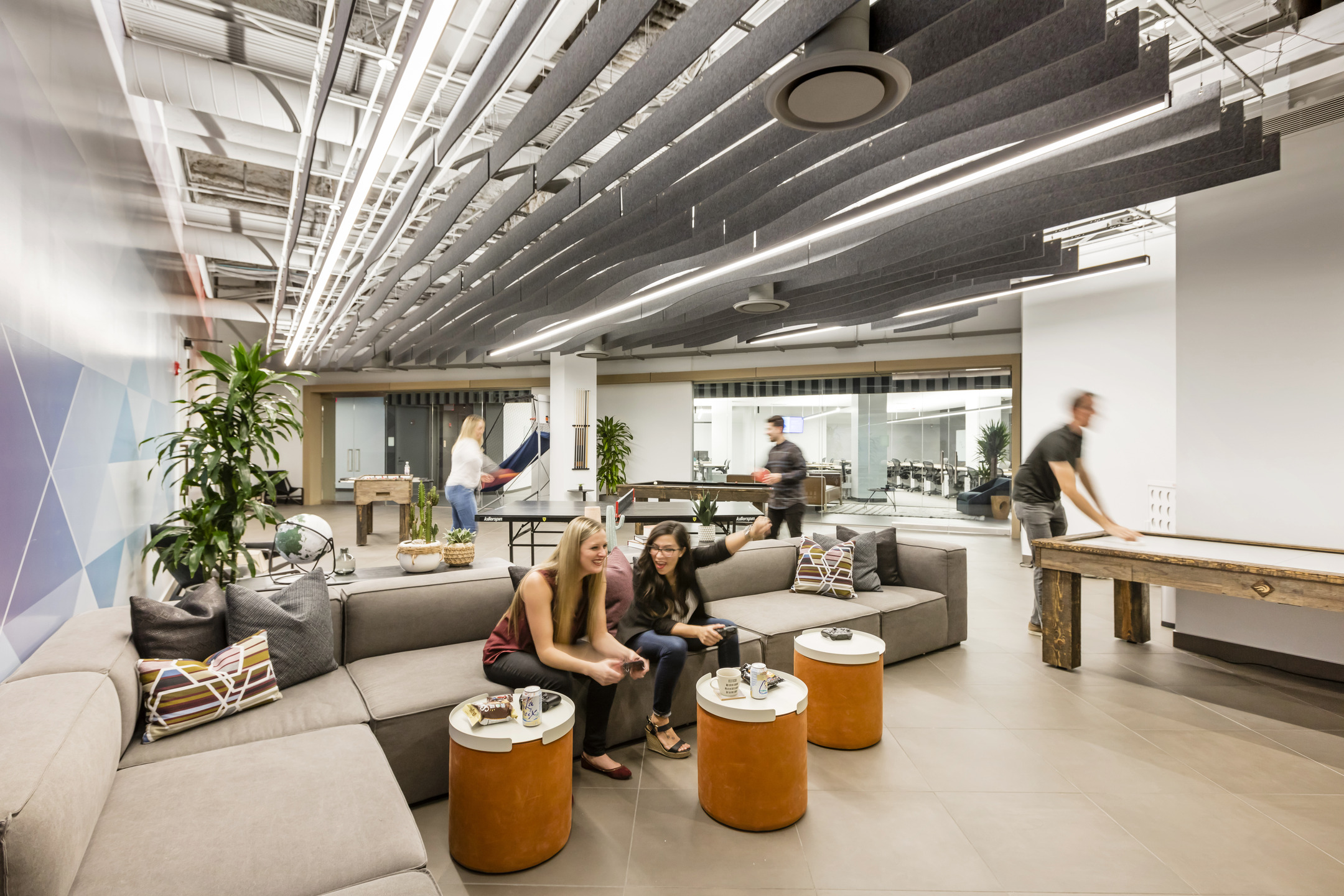
Does it spark innovation? Is there a sense of excitement and optimism? How does it fit into the rhythm of our lives? Does it reflect those things that matter most to us? Those are big shoes to fill if reduced down to a desk and the right software. That’s because the energy of the office—that which powers our work and sets the beat of our social and cultural dances is so much more than place. Really, it’s about people—no surprise, of course. But, what happens when employees increasingly depend on establishing those interpersonal connections and replicating that exchange from behind a screen? Or, when you’re greeted by a sea of empty desks on your first day? How then, does the office preserve the energy, the culture, and the lifeline of how we work in a graveyard of desks?
When Virtual Isn't Enough
For many, the office feels emptier. Because of it, it feels harder to have a sense of what others are working on by passively hearing or literally seeing the writing on the wall. We struggle to be reminded of the bigger mission, or that we do, in fact, like each other. Without which it can be hard to maintain your own interest, energy, and enthusiasm. The rigidity of virtual platforms that require us to schedule collaboration and connection simply can’t mirror the social capital built from causal, natural exchanges throughout the day.
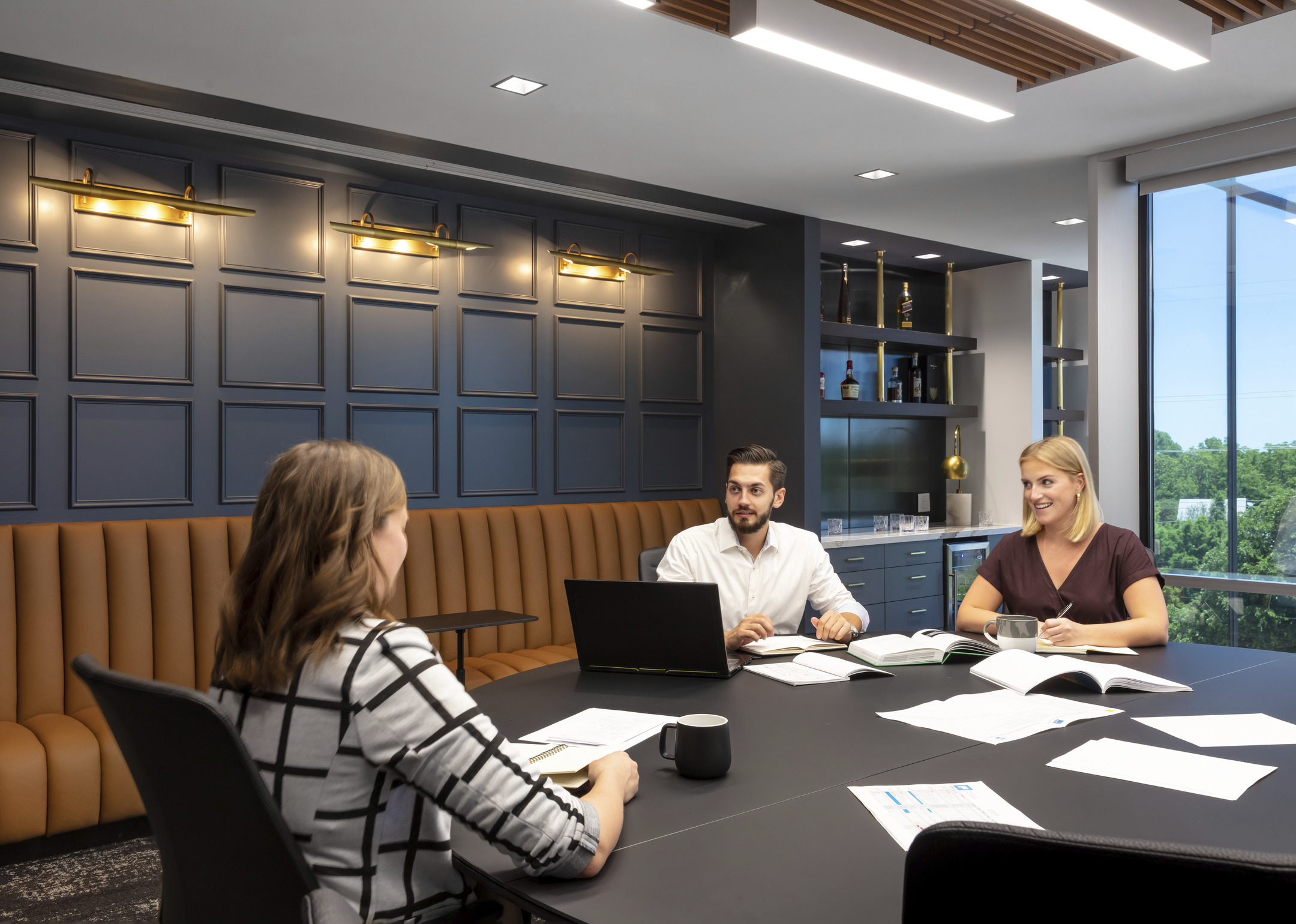
The social and intellectual energy that lights up our brain and our passions is hard to replicate at home alone, but an empty office has little appeal other than maybe the reliable Wi-Fi. Instead, it reminds of what we lost. We hear from leaders who mourn the loss of a culture they worked so hard to build, the vibrancy of their office when it was alive with activity. So, though hybridity has welcomed new efficiencies and flexibilities, it complicates office culture—presenting a challenge made even more urgent by the competition for talent and the pressure to more deeply engage staff and enrich their experience. The Great Resignation has called to attention those who have opted to search for something more fulfilling. Some who have joined the exodus from the workplace may have been motivated by other influencing factors such as childcare or health reasons—but the lack of connection isn’t helping.
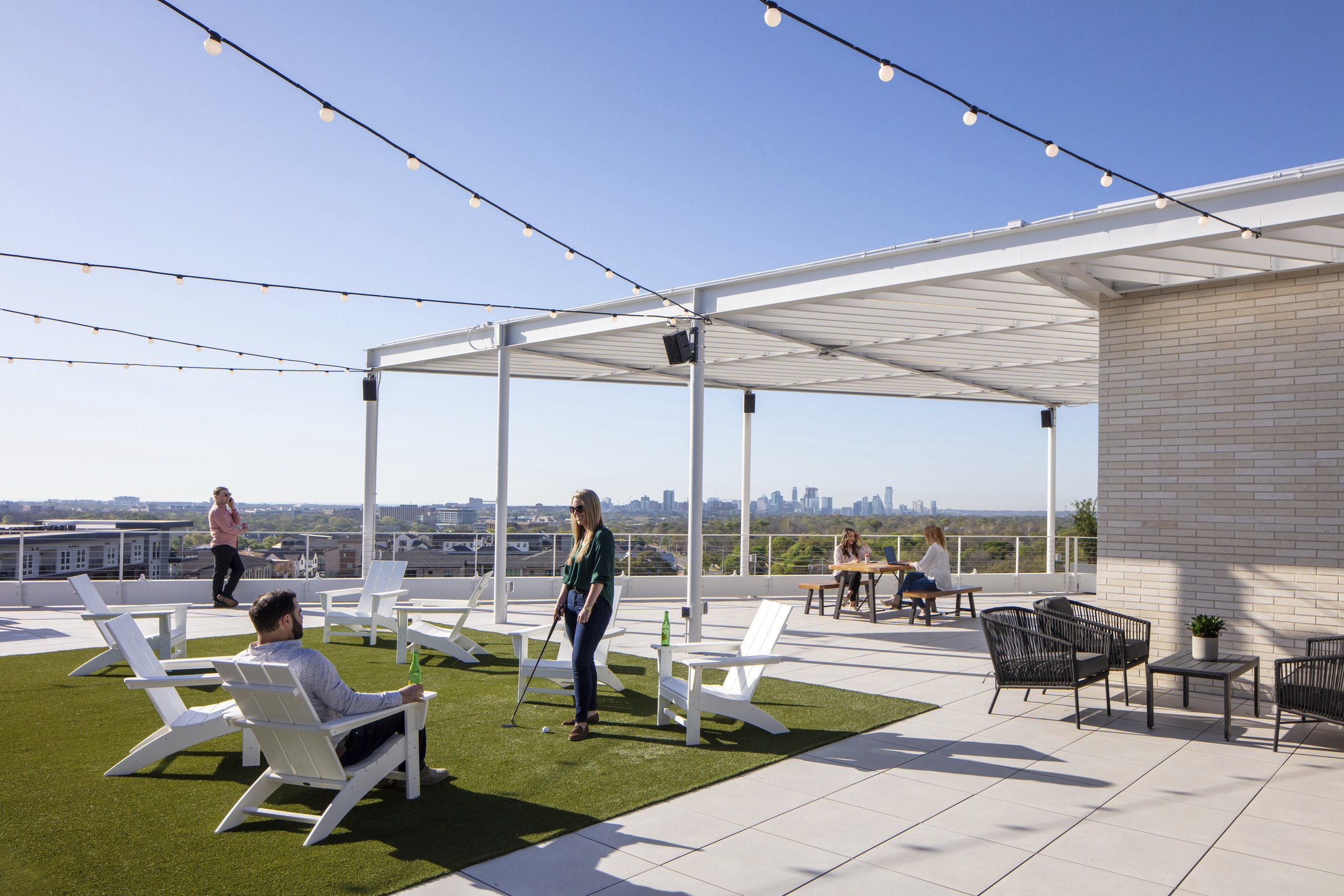
Research continues to reinforce that strong relationships at work can be tied to increased engagement, improved productivity, and better retention. According to the Harvard Business Review, having a best friend at work improved the overall experience for employees who were also more likely to be happier and healthier. For so many of us, myself included, it can be hard to develop friendships over Zoom. The taxing nature of virtual platforms including an inherent disconnection, a lack of verbal cues, technology interruptions, and the mental energy spent organizing, troubleshooting, and tripping over each other may be a price we are willing to pay for the option to work from home, but when it comes at the cost of making work unpleasant, many are left searching for something more.
Solutions Through Design
Fortunately, the outlook on the office is promising. The office has had to change before and it will again. Just as the prioritization of health and wellness popularized the central staircase and respite rooms, our experience today will give shape to an office founded on celebrating its social values as a hub of energy, connection, and innovation. Here’s how design can help.
Zones
First, lead with the energy you want to communicate. Set the tone. The character, function, and use of space all send a message. Good design can ensure that priorities and messages are clearly articulated throughout the user journey.
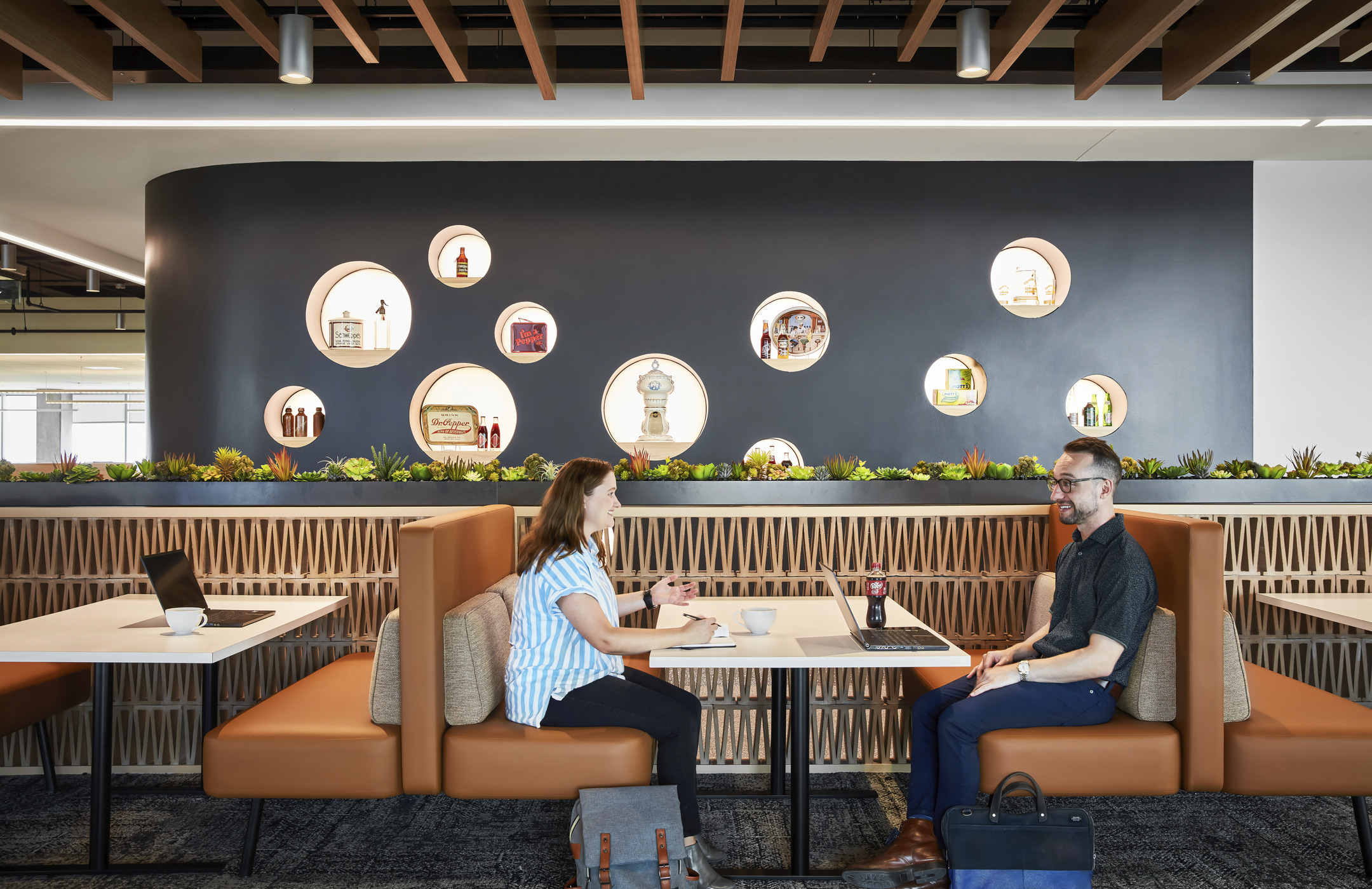
Next, rethink your zoning approach. Where zoning has often been planned around levels of security or acoustics, intentionally planning spaces based on the type of energy in a space—loud, quiet, sustained, dynamic, for instance—can help organize activities. Instead of trying to drum up energy on a day when most of your team is remote, zones allocated for celebration and collaboration naturally reintroduce density when needed. Spaces with ample natural light, moveable furniture, and larger volumes allow teams to explore more freely, get creative, and even play and fidget. Conversely, as more colleagues take advantage of face-to-face time and activity spikes, spaces dedicated for focus work allows different tasks and activities to work in harmony. In addition to the freedom to choose where to work, employees need a mix of settings from quieter, library options to more energetic, vibrant spaces for socializing or an afternoon pick-me-up.
Social Hubs
Sure, fancy coffee is attractive, but that will only last until someone offers employees better coffee. What people actually want are more people. People they can learn from, that share similar values and goals, that offer diverse perspectives and experiences, and that remind them of why it all matters.
While employers navigate the right amount of conference rooms and work spaces, the future of the water cooler holds potential to dramatically transform the office experience. Those spaces that serve as a stage for the in-between—where we debrief on meetings, catch up over weekend plans, and meet new teammates—become increasingly important as we look to preserve and rebuild our connection with each other. Hubs designed to casually and intentionally attract this sort of activity have fortunately evolved beyond the water cooler but in many ways find success for many of the same reasons. Done well, they are situated with easy access, lean on the frequent needs of employees, and become a part of the rhythm of their daily lives.
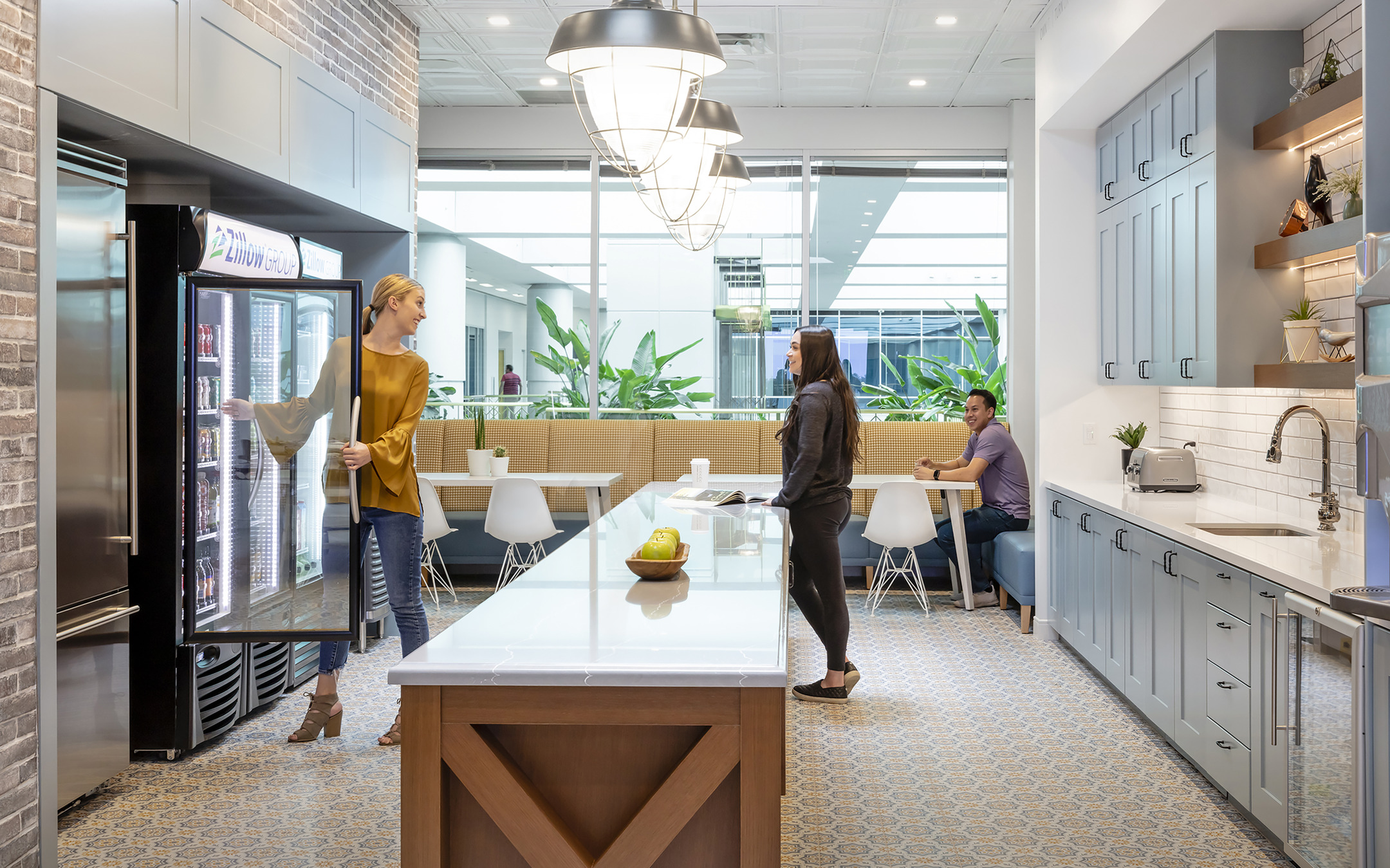
Inspired by the new expectations in work life balance, these hubs can support the other parts of our non-working life. For instance, well-appointed kitchens tap into the natural draw of food but move beyond the grab-and-go versions. Instead, they invite you to pause, be mindful, and enjoy your favorite avocado toast. Residentially inspired finishes are not new to the office, however, residential-like experiences—a latte on the sofa, taking to the rooftop patio for afternoon happy hours, or lounges to gather for the big game—not only respond to the blurred lines between life in and outside the office, but also serve as an antidote to the past two years in bringing us together and reactivating corporate cultures.
Ratios & Repurposing
The proportions of “we” vs. “me” spaces are directly tied to a company’s policies or expectations around in-office and remote work. For those who require staff in the office a certain number of days, it means providing a more typical distribution of spaces so employees have predictable and dedicated spaces for work whereas those who approach the office as an amenity will likely need to allocate more of their space for social and collaborative functions. Identifying the primary purpose of the office for the client and matching it with the optimal mix of spaces can help avoid dead spaces and instead showcase the energy and culture of the teams.
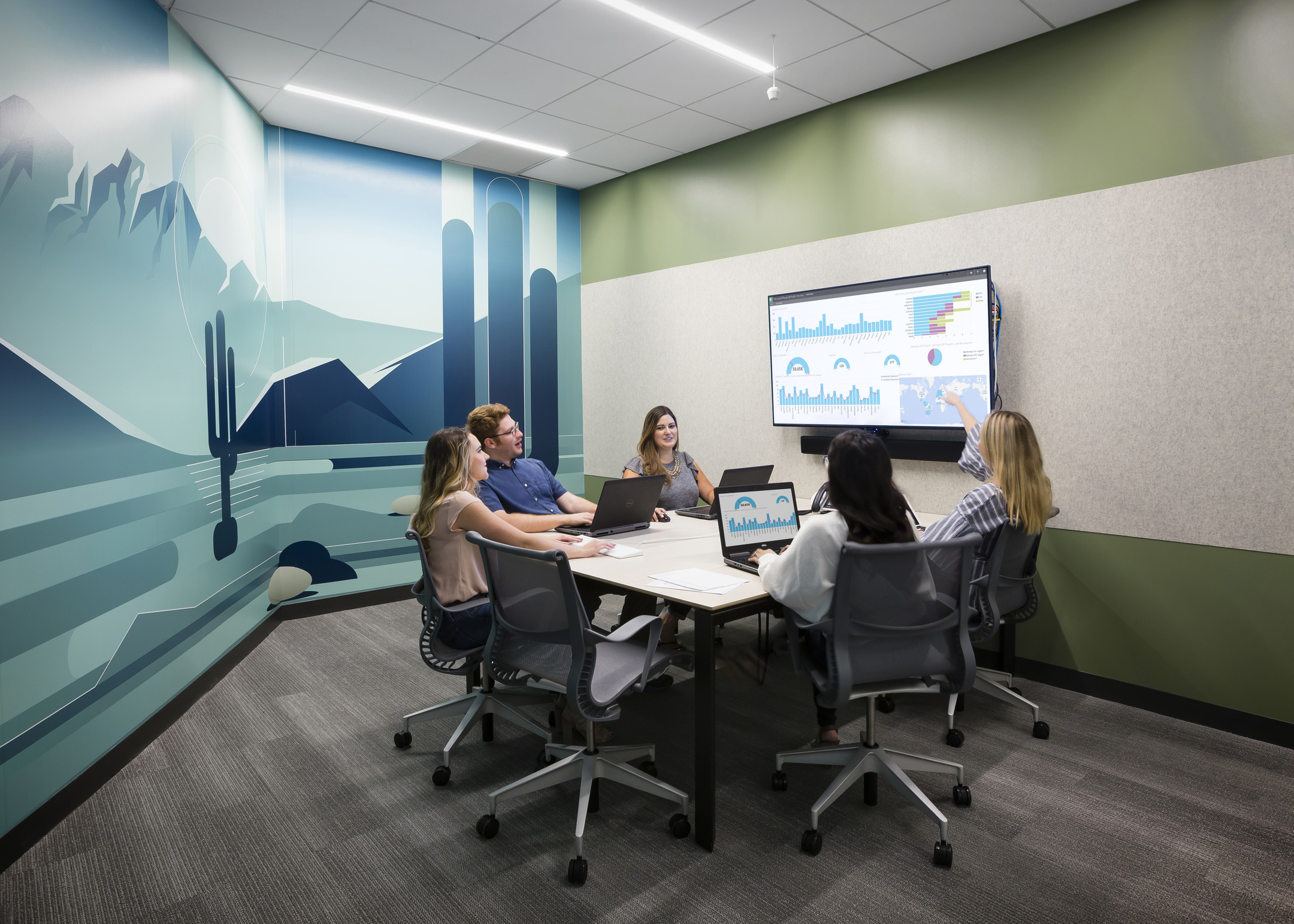
With less real estate committed to individual workspaces, the office has an opportunity to reinvent the ratios and uses of its square footage. If fewer desks are needed, what to make of the newly available space? Setting up workstation zones that are underutilized as designated team-based spaces so an entire team can gather together provides nearby, reliable breakout spaces that reinforce ownership and belonging. A wider variety of group-focused spaces and amenities supports all those connections that we can’t quite replicate in the virtual environment, like team building, brainstorming, one-on-one sessions and training. The key is to provide features that employees are actually excited to use that they can’t get at home. Otherwise, what’s the point?
Energy Zappers & Sources
Few things can take the wind out of your sails more than technology issues or not having the right resources to meet basic, fundamental needs. But feeling disconnected from your colleagues and corporate culture can lead to a more subtle, sustained depletion of energy and drive—making motivation harder to find and daily tasks harder to do.
On a smaller scale, individual face-to-face time can be restorative, help us feel valued, and is critical to learning the ins and outs of our work. On a larger scale, occupancy that meets the design—meaning spaces that are appropriately filled and used—signals life, relevancy, and purpose. Imagine arriving to a nearly empty office and taking your meetings virtually. It might feel like walking into a party with no one there. Regardless of the number of desks, meeting room ratios, or amenities—underutilized spaces fall flat and impart a message of stagnation and indifference whereas activated spaces, even if quieter and smaller, cue vibrancy that is infectious. It encourages engagement and invites inspiration.
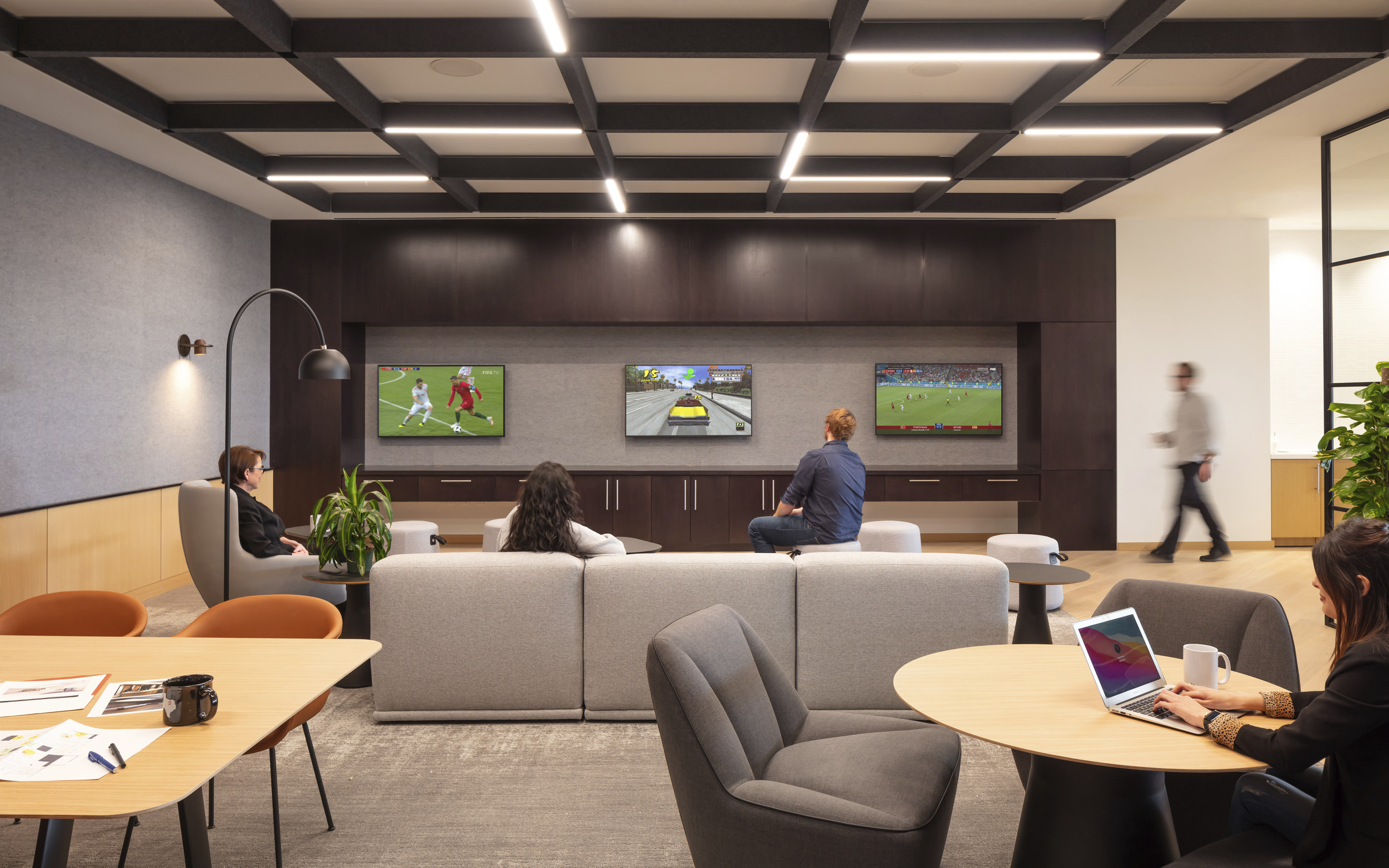
Removing parts of the workday that unnecessarily cause friction and take up energy frees up mental energy, making us happier, healthier, and more productive. Instead of spending your time trying to find a place to work, for example, an app can help users quickly navigate a space and onsite wellness treatments, laundry, and car service can remove dread from looming chores so employees can reallocate their energy to what excites them most.
New Possibilities for Enduring Values
The office isn’t just for work anymore. It’s about feeling connected to each other, excited about our shared goals, and invigorated by the possibilities of being together again.
Unlike flashy headlines that declared the demise of the office early in the pandemic, most employers have found a resounding and enduring value in the workplace. While each client must evaluate the varied needs and functions of their team and may even still arrive at different solutions, the symbolic value of the office remains. The stage for us to articulate our culture and connection, these physical spaces have an opportunity to reshape our experience of work. As we work through the transition, thoughtful considerations of how design and policy intersect can amplify and enhance our connection to each other—regardless of how many of us are “there.”
For more on the future of work, check out Workforce Blurred.
TheSquare Ep #46 · Tech Trends in Planning
The reinvention of work has prompted employers to examine how they use space. How much space do they need? What does a hybrid workforce mean for their office design? Characterized by their agility, tech companies have invited and, in many ways, led the experimentation of added flexibility and customization to support their unique team needs, work styles, and cultures. Marked by collaboration and a culture of innovation, Jill Ibison, a leader in Corgan's Interiors Studio, draws inspiration from these forerunners to consider how to optimize office design—supporting a more personalized, flexible approach for teams, hybridity, the future of how we work.






